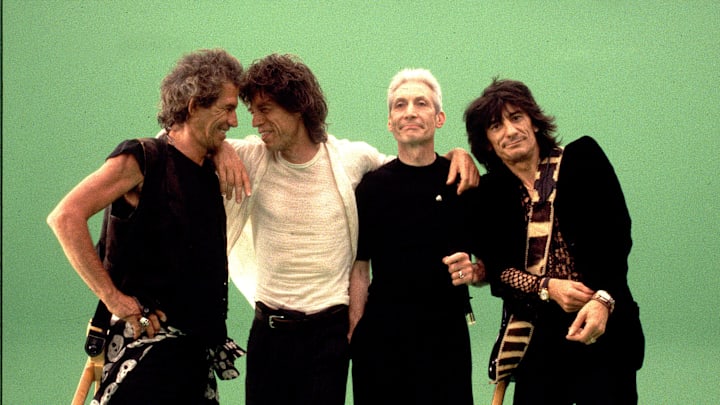In the mid-80s, The Rolling Stones weren't doing so well. Mick Jagger, Keith Richards, and Ronnie Wood performed at Live Aid, but not together. Jagger performed a set of solo material, while Richards and Woods accompanied Bob Dylan.
Fans who thought this was strange couldn’t have known half of it. The Rolling Stones were, at the time, working on the album Dirty Work, and during these sessions, all five members were rarely present at the same time. Relations between Jagger and Richards were at an all-time low. Unsurprisingly, they did not tour Dirty Work.
Three years later, The Stones made a surprise comeback with Steel Wheels. But in a way, Dirty Work had still been the end for the Stones. Steel Wheels was the first album they made as a legacy act, old legends past their glory days, but still able to belt out the old hits for football stadium-sized audiences, but not really making earth-shattering albums.
Dirty Work was assumed to be The Rolling Stones’ swansong
The Stones went on to make six post-comeback albums, including Steel Wheels. I’m fascinated by old rockers’ late-period albums. What do people with the Rolling Stones’ talent and resources do when they're too famous for anyone to tell them "no," and no one’s really listening to the new stuff anyway?
Blue and Lonesome (2016)
As you may have guessed, I intended this as a straightforward worst-to-best ranking, but these albums resist such a ranking. Except for one, none of these albums is completely bad or completely good.
Exhibit A in why these albums just can’t be ranked in any way that makes sense. Blue and Lonesome was, until recently, the completely good late-period Rolling Stones album. There are no duds here. Blue and Lonesome is the Stones firing on all cylinders, doing what they do best, and proving that they’re still a force to be reckoned with. It’s probably the best-received album among this lot, and I won’t argue.
But it’s also the only one without any moments of wild experimentation or mad genius. As a result, it’s the one I enjoyed the least. Blue and Lonesome is the Stones' first album to consist entirely of covers, blues covers by the likes of Howlin’ Wolf, Lightnin’ Slim, and Little Walter, to be exact. They’re right in their element, but nothing here is particularly memorable. Whenever I try to think about the content of this album, all I hear is the Stones' version of Howlin’ Wolf’s "Little Baby" from 1995’s unplugged album Stripped.
The best song on Blue and Lonesome is Jimmy Reed’s "Little Rain." Though it’s still not particularly memorable. It builds from a slow burn to an assured haunting wail. Little Rain is a change of pace, from the lively honking blues that surrounds it.
So, what makes Blue and Lonesome so good, if it’s so forgettable? Well, it’s that sense of assuredness. When listening to old rockers’ late-period works, there’s always the nervous feeling that you’re about to hear something that’s so embarrassing to their legacy that it makes you fear aging yourself. But Blue and Lonesome is the Stones proving that they’re more than worthy of their impressive legacy.
Blue and Lonesome doesn’t overstay its welcome, which is a refreshing change of pace, as you’ll see.
